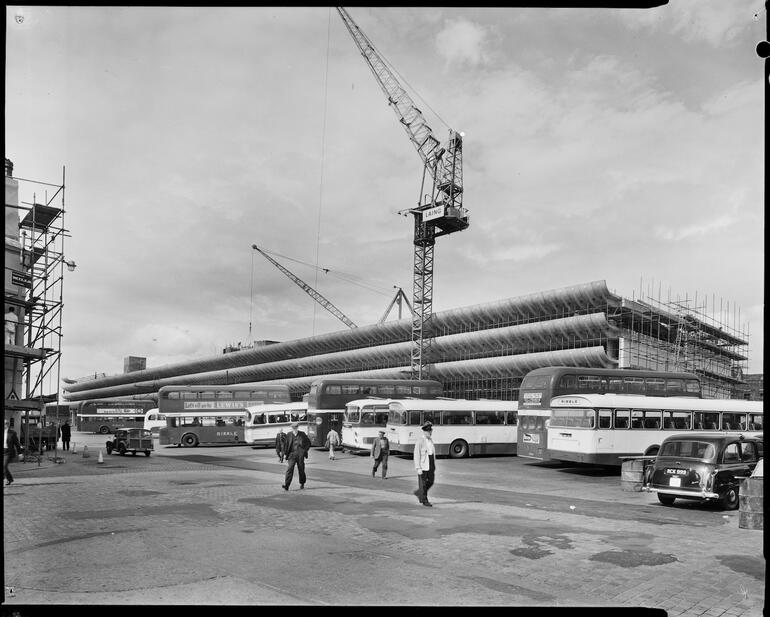
Preston Bus Station, Preston, UK
Preston Bus Station was designed in 1968 by Keith Ingham and Charles Wilson of the Building Design Partnership (BDP) and the engineering firm Ove Arup.
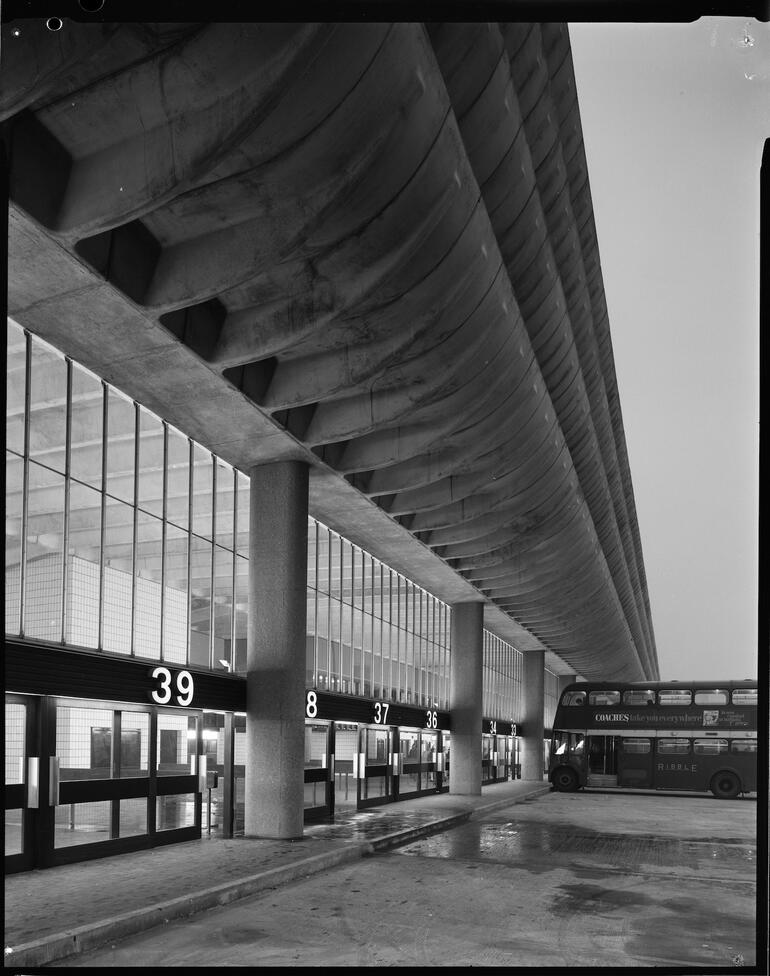
Europe’s Largest Bus Station
A fine example of brutalist architecture and transport planning of the period, when Preston Bus Station opened to the public in October 1969 it was Europe's largest bus station.
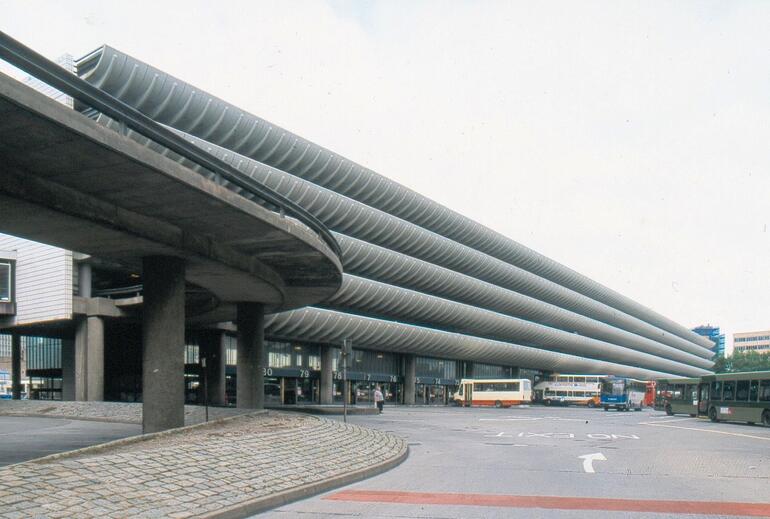
British Brutalism on the 2012 World Monuments Watch
While the building was operational, it had been neglected and was in a poor state of repair. In 2012, Preston Bus Station was included in the World Monuments Watch as a response to the threat of demolition and to raise awareness about the significance of brutalist architecture in the United Kingdom.
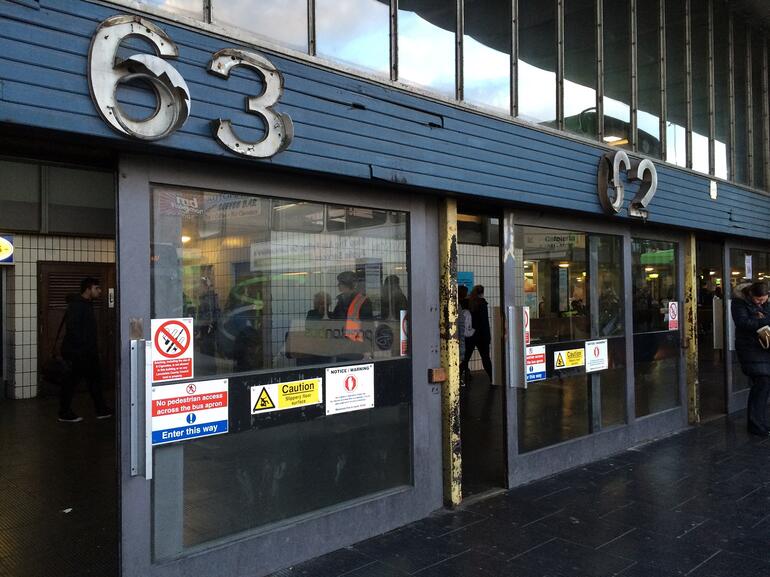
Undertaking the Restoration
In 2015, after years of neglect, a design competition was held leading to the appointment of John Puttick Associates to restore the station.
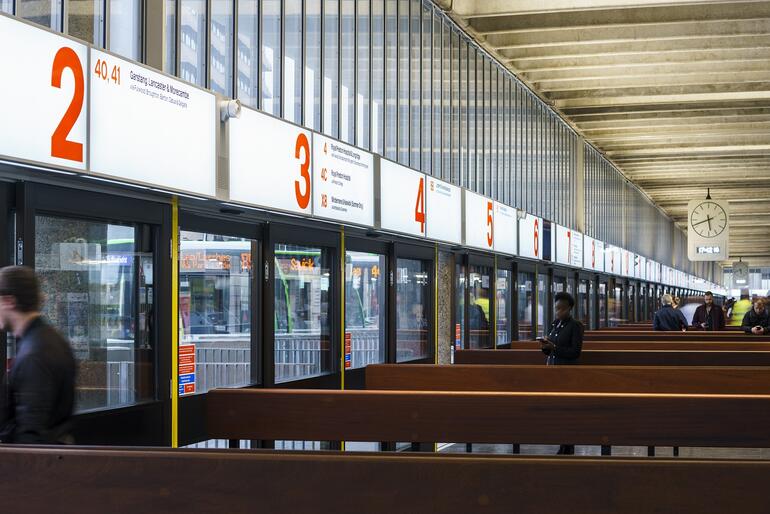
A Center for Mass Transit
With over 10,000 bus departures every week, Preston Bus Station is an extremely busy public building and one of the centers of life in the city, proving its importance still today as an active civic monument in Preston.
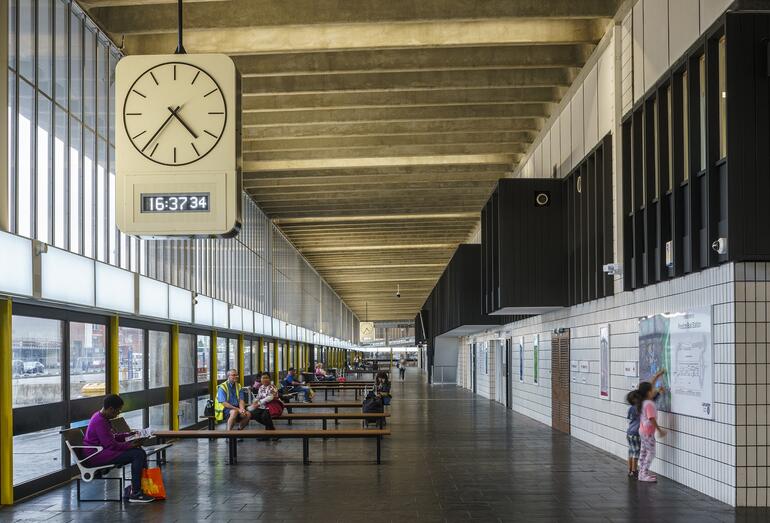
Improving Pedestrian Access
The conservation project has improved the connectivity between the station and the city. Previously, the station was isolated from the city center by a sea of bus parking.
The refurbishment reorients the building, prioritizing pedestrians over vehicles. Bus arrivals have been consolidated and a new public square has been created in front of the station.
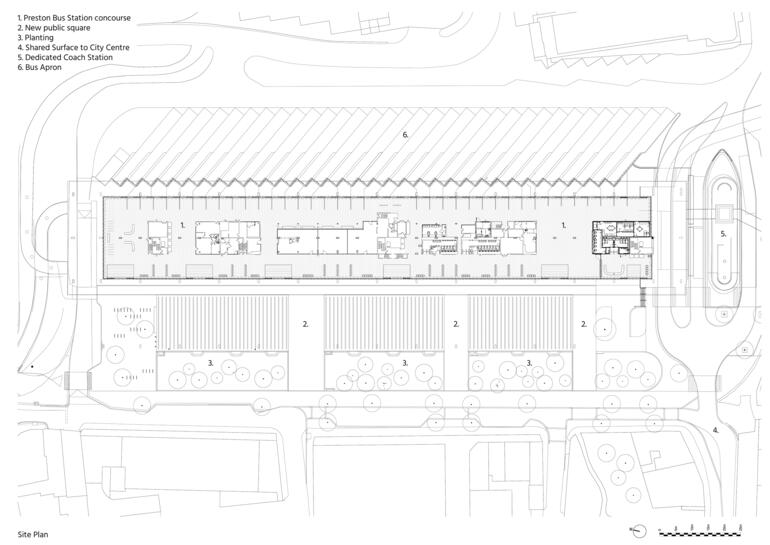
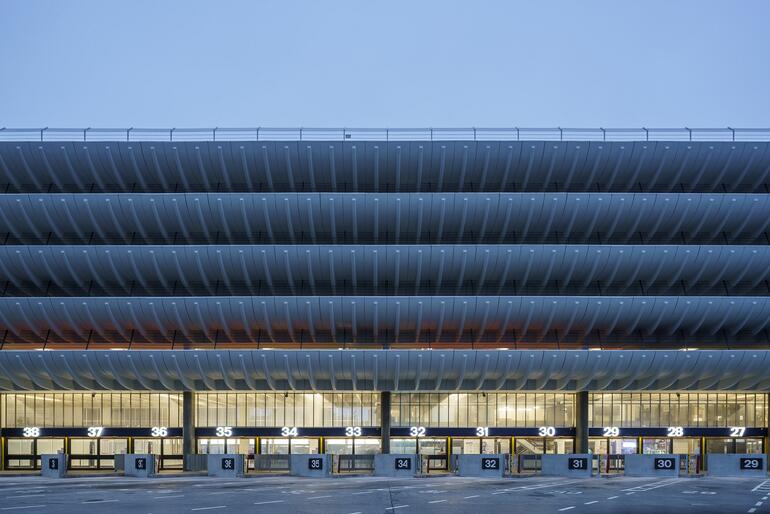
The Restoration of the Facade
The building’s facade had suffered considerable damage over time, most dramatically when a section collapsed in high winds in late 2015.
The facade has now been replaced, with care taken to match the original detailing and color palette while addressing the technical issues that led to decay.
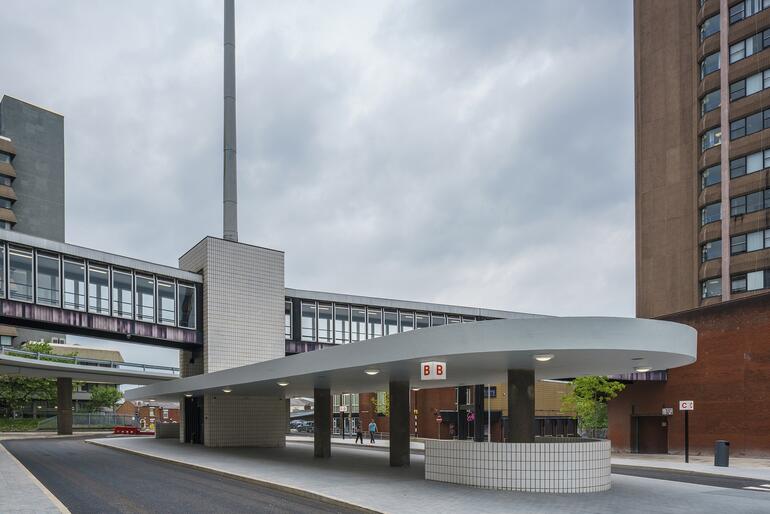
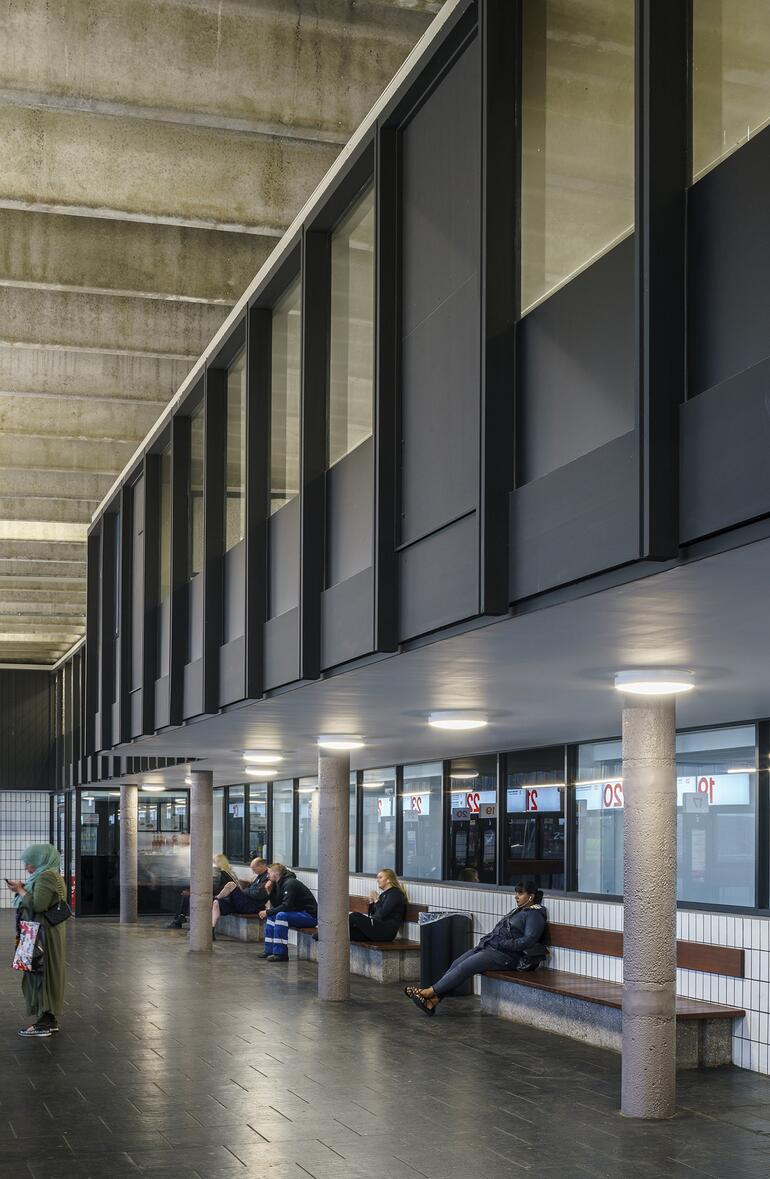
The Interior Restoration
Reinstating the powerful 1960s design, the project also included a thorough restoration of the original materials, such as the rubber flooring and the color palette in the interior spaces, including the "spine" of services that runs through the center of the building.
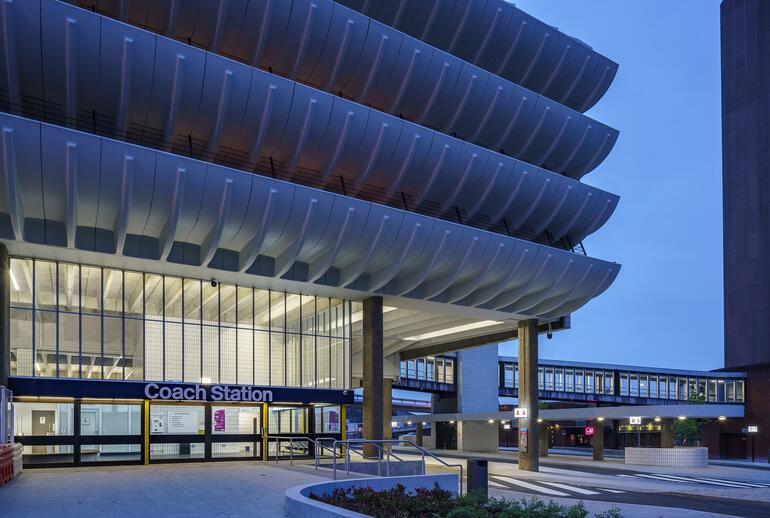
The Power of the Restoration
The World Monuments Fund/Knoll Modernism prize jury valued the detailed and extensive efforts of this project to preserve the full spectrum of historic significance of Preston Bus Station: from its original materials and aesthetic to the building’s essential role as a civic center of transit and urban connectivity.
“The prize focused specifically this year on sustainable and community-centered approaches to adapting modern buildings. The restoration of Preston Bus Station has enhanced both the social and public benefit of the station, which contributes to minimizing the significant carbon footprint of commuting,” said Bénédicte de Montlaur, President and CEO of WMF. “We are thrilled to recognize the outstanding achievements of John Puttick Associates with this year’s prize.”
WMF launched the biennial World Monuments Fund/Knoll Modernism Prize with founding sponsor Knoll in 2008 to recognize the individuals and organizations that preserve our modern built heritage through pioneering architectural and design solutions. The prize honors contemporary architects and preservationists whose work ensures sustainable futures for at-risk modern heritage.

